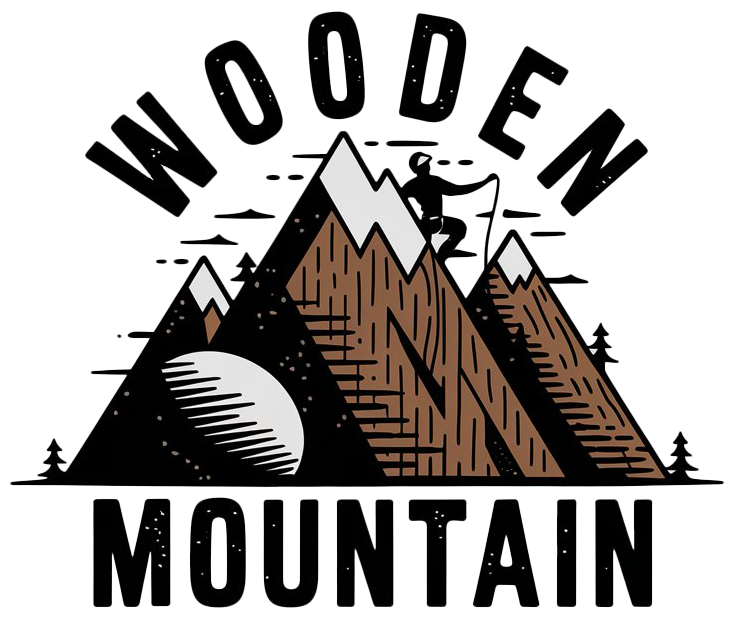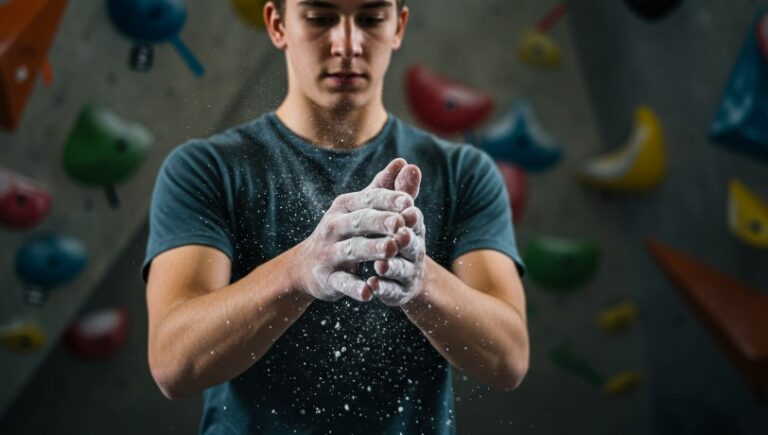Chalk might not be the flashiest piece of gear in your climbing bag, but when your fingertips are clinging to a sloper or digging into a sharp little crimp, it can make all the difference.
It doesn’t matter if you’re crushing V4s in your local gym or scrambling over sandstone in the desert; finding the right chalk isn’t just a comfort thing; it’s a performance thing.
And if you’re bouldering, where every move packs a punch and every grip matters, the type of chalk you use starts to matter more than you’d think.
There’s a lot of noise out there: loose chalk, blocks, liquid, chalk balls—every climber’s got an opinion. So let’s cut through it and look at what actually works, when, and for whom.
Key Highlights
- Loose chalk gives strong grip and is budget-friendly, but it’s messy and needs frequent reapplication.
- Block chalk is customizable and cheap, but less convenient during sessions.
- Liquid chalk lasts longer and cuts dust, ideal for humid days and comps.
- Chalk balls offer a clean, balanced option—great for gyms and new climbers.
Loose, Block, Liquid, or Ball?
Each type of chalk has its fans—and for good reason. They’re suited to different climbing styles, settings, and preferences. Let’s break them down.
Loose Chalk
Loose chalk is probably what most climbers picture first. It’s the fluffy stuff you scoop out of your chalk bag or bucket, usually in powder or chunky form.
Why people love it:
- It gives you maximum coverage. You dip your hands and walk away fully coated, ready to throw yourself into a dyno or compress a pair of slippery pinches.
- It’s quick to apply. Just one dip and you’re good.
- It’s usually cheaper than other options.
- You can choose the texture—fine powder like FrictionLabs Unicorn Dust, chunkier blends like Black Diamond White Gold, or something in between.
Where it falls short:
- It’s messy. Like… really messy. It leaves clouds of dust behind and tends to coat everything—holds, clothes, airways.
- You’ll probably have to reapply more often, especially if you’ve got sweaty hands or are climbing outside in the heat.
- Some gyms aren’t fans of the dust and might limit or ban its use.
- On outdoor rock, especially in protected or polished areas, it can leave unsightly residue.
Best for:
Climbers who like fast, no-fuss application and don’t mind a bit of chalk dust flying around. It’s also great for budget-conscious climbers who burn through chalk fast.
Block Chalk
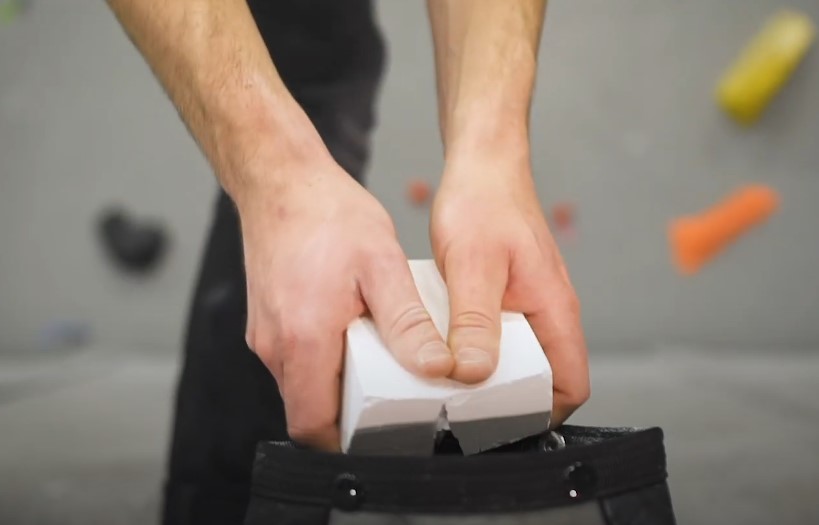
Block chalk is basically a compressed brick of magnesium carbonate. Same ingredient, just in a different form.
What it offers:
- It’s less dusty than loose chalk.
- You can break it into whatever size chunks you like, giving you more control over the texture.
- It travels well and doesn’t spill everywhere in your gear bag.
- It’s often cheaper by weight.
The downsides:
- It needs prep time. You’ll probably need to crush it down a bit before a session.
- It’s harder to get consistent coverage unless you break it up first.
- Mid-session, it’s just not that convenient. You’re not going to pause and grind up chalk between burns.
Best for:
People who want to tweak their own chalk texture and don’t mind the extra step. If you’re into DIY or just like things old-school, a block of Frank Endo or Metolius Chalk Block might be your jam.
Liquid Chalk
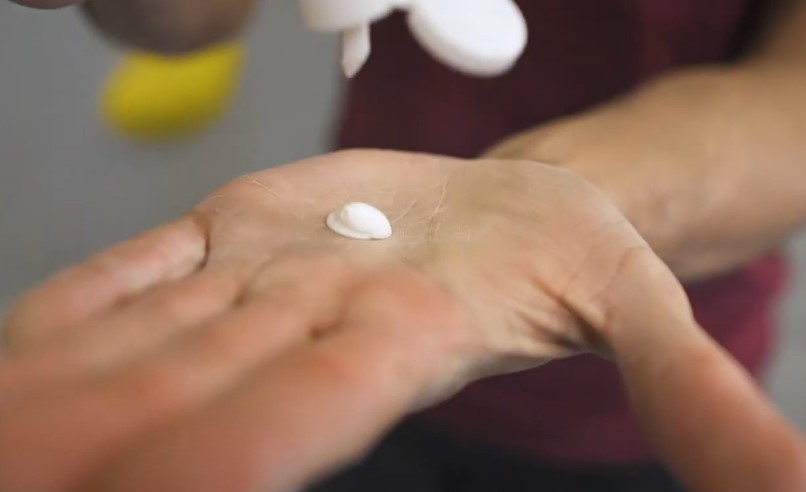
This one’s gained a lot of fans recently, especially in gyms and competitions. Liquid chalk is basically magnesium carbonate mixed with alcohol.
You rub it onto your hands, wait for it to dry, and you’re left with a thin, even layer of chalk that stays put.
Where it shines:
- It lasts. One application can carry you through an entire session or project.
- It produces no airborne dust. Big win for indoor gyms or outdoor crags with environmental concerns.
- The coverage is smooth and complete, ideal for slopers and sweaty conditions.
- It’s super easy to carry—just toss a tube of Mammut Liquid Chalk or FrictionLabs Secret Stuff in your pack.
But here’s the catch:
- You’ve got to wait a minute or two for it to dry.
- It’s not great mid-problem—you can’t really reapply while hanging off a volume.
- The alcohol content can dry out or irritate skin, especially if you’ve got cuts or cracks. Though there are gentler formulas now, like alcohol-free versions from 8BPLUS.
- It’s pricier per use compared to loose or block chalk.
Best for:
High-stakes climbing days. Liquid chalk is great when conditions are tough, humidity is high, or you’re pushing into higher grades. Also great if you’re sensitive to chalk dust.
Chalk Balls
在 Instagram 查看这篇帖子
Think of chalk balls as the middle ground between loose and block chalk. A chalk ball is a mesh fabric pouch filled with loose chalk. You squeeze it to coat your hands.
Why climbers like them:
- Less messy than straight loose chalk.
- They give a pretty even coating without creating clouds of dust.
- They’re refillable (some, like FrictionLabs Magic Pro, are reusable), which is nice for the environment and your wallet.
- They’re often gym-approved since they reduce airborne dust.
Potential issues:
- They don’t always release enough chalk, especially if you like your hands fully coated.
- New ones can feel stingy—there’s a bit of a break-in period.
- In very humid or sweaty conditions, they might not give enough grip.
Best for:
Most general bouldering sessions, especially indoors. Chalk balls strike a good balance between mess control and performance.
Side-by-Side Summary
| Chalk Type | Pros | Cons | Best Use |
| Loose | Fast application, customizable texture, cheap | Dusty, needs frequent reapplication | Budget climbers, gym or outdoor sessions |
| Block | Cheap, customizable, less dusty | Requires crushing, slow to use mid-session | Texture nerds, people who prep ahead |
| Liquid | Long-lasting, no dust, strong grip | Drying time, expensive, can irritate skin | Hard problems, sweaty days, comps |
| Chalk Balls | Clean, reusable, gym-friendly | Less coverage, break-in period | Indoor climbers, all-around use |
Choosing the Right Chalk for You
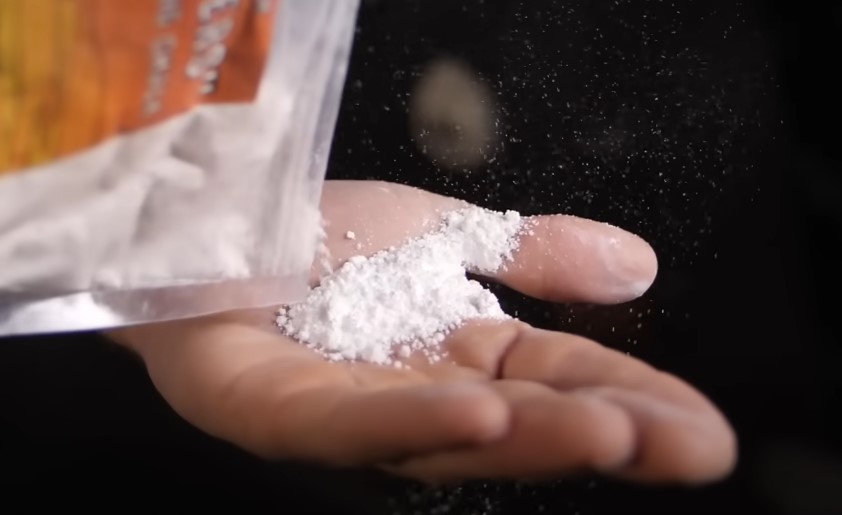
So what should you actually use?
Let’s say you’re…
…bouldering in a gym?
Go for a chalk ball or liquid chalk. Gyms are typically not thrilled about the mess of loose chalk, and you’ll appreciate the cleaner hands and fewer chalk clouds floating around.
…projecting outside in humid weather?
Liquid chalk could be a game-changer. It sticks longer, especially when you’re pushing through extended rests or long attempts on hard problems. Follow it up with a light dusting of loose chalk if you need extra.
…on a tight budget?
Loose or block chalk gives you the most bang for your buck. Grab a bag of Metolius Super Chalk or break down a block of Frank Endo and you’re set for weeks.
…concerned about sustainability?
Look for refillable chalk balls or eco-conscious brands like Black Diamond ECO Gold or FrictionLabs Magic Pro. Less waste, less mess.
…just getting started?
Try a chalk ball. It’s the easiest to use, less intimidating, and gets you climbing without fuss. Later on, you can experiment with loose or liquid as you develop preferences.
Some Favorite Brands Climbers Swear By
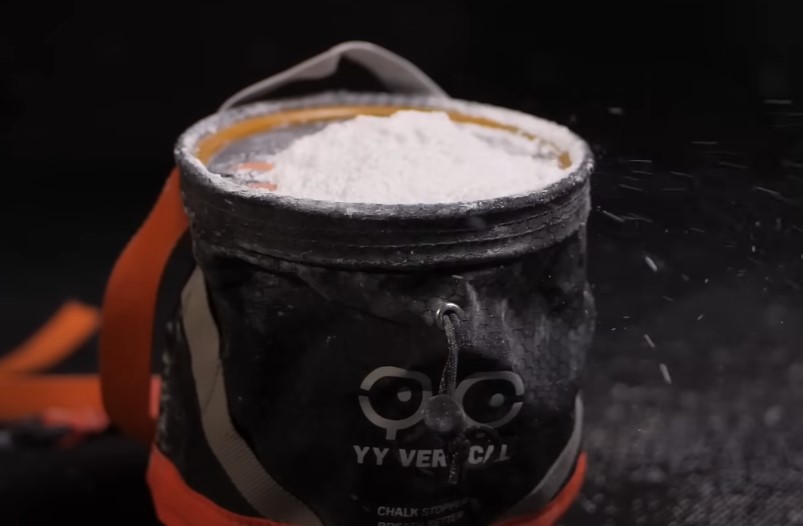
- FrictionLabs – Known for ultra-high purity chalk. It’s pricier but top-tier for performance. Their Secret Stuff liquid chalk is a favorite in humid conditions.
- Black Diamond – Their White Gold is a staple in the climbing community, and their ECO Gold is great for outdoor-conscious climbers.
- Metolius – Affordable and consistent, whether you go for loose, block, or chalk balls. Great entry-level option.
- Mammut – Their Liquid Chalk is praised for strong friction and lasting coverage.
- Asana – Their White Dirt chalk has a texture that many boulderers love—chunky but smooth.
Final Thoughts
Chalk might seem like a minor detail in bouldering, but the right choice can mean fewer slips, less frustration, and more time focused on the problem in front of you. There’s no single “best” chalk for everyone. It depends on where you climb, how hard you’re pushing, and what kind of feel you want on your hands.
If you’re looking for all-around reliability with less mess, chalk balls are a solid go-to. For sweaty sessions or tough routes, liquid chalk gives you staying power. If you’re old-school or watching your wallet, loose or block chalk is still a strong option.
Try a few, mix and match, and see what clicks. And if your hands are dry, your grip’s strong, and you’re sending with confidence, that’s the real win, no matter what kind of chalk you’re using.
